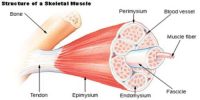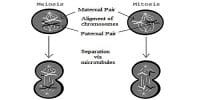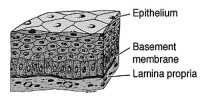Epithelial Tissue commonly refers to an epithelium (pl.: epithelia). This tissue has a free surface, which faces either a body fluid or the outside environment and thus provides a covering or a lining for some pan of the body. The cells are compactly packed with the little intercellular matrix.
There are two types of epithelial tissues namely simple epithelium and compound epithelium.
Simple epithelium is composed of a single layer of cells and functions as a lining for body cavities, ducts, and tubes.
The compound epithelium consists of two or more cell layers and has the protective function as it does in our skin. On the basis of a structural modification of the cells, the simple epithelium is further divided into three types. These are (i) Squanious. (ii) Cuboidal. (iii) Columnar (Figure).

The squamous epithelium is made of a single thin layer of flattened cells with irregular boundaries. They are found in the walls of blood vessels and air sacs of lungs and are involved in functions like forming a diffusion boundary. The cuboidal epithelium is composed of a single layer of cube-like cells. This is commonly found in ducts of glands and tubular parts of nephrons in kidneys and its main functions are secretion and absorption.
The epithelium of proximal convoluted tubule (PCT) of the nephron in the kidney has microvilli. The columnar epithelium is composed of a single layer of tall and slender cells. Their nuclei are located at the base. The free surface may have microvilli. They are found in the lining of stomach and intestine and help in secretion and absorption. If the columnar or cuboidal cells bear cilia on their free surface they are called ciliated epithelium.














